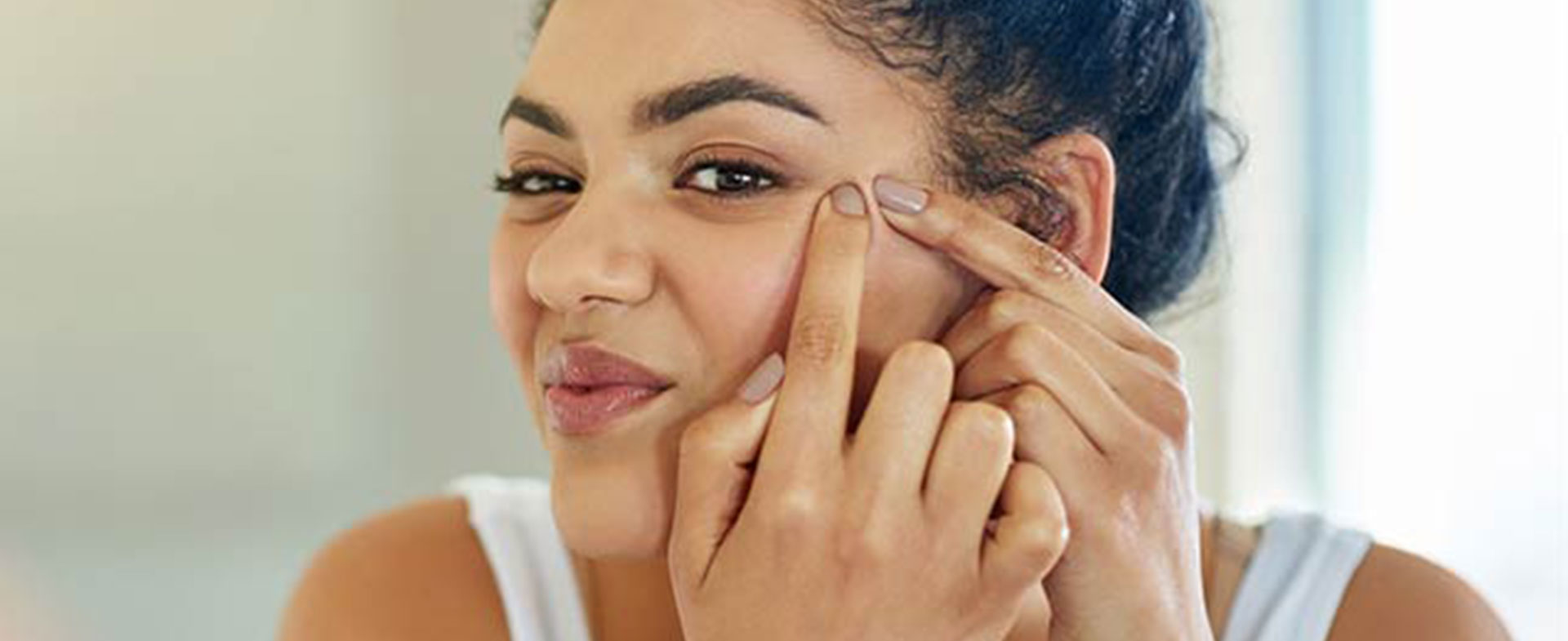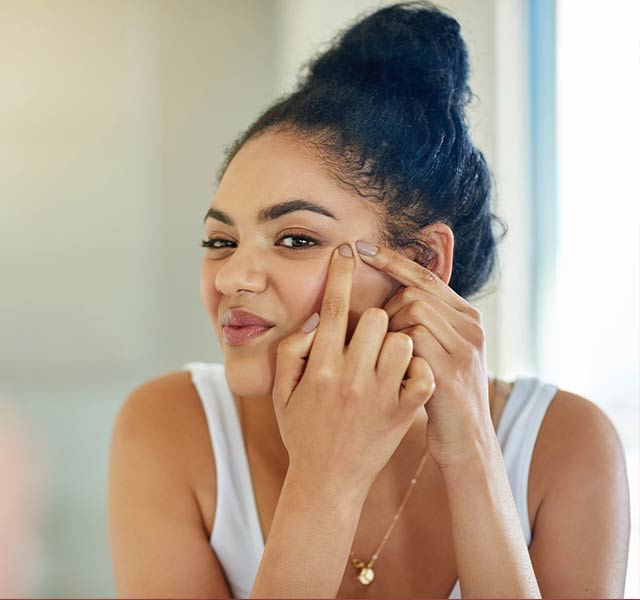One change many of us can add to the list of daily life in quarantine? Skin that seems to be reverting to our hormonal teenage years—as in, increased breakouts. If you’ve noticed more blemishes than usual (or if you’re getting acne in places you hadn’t before) a few factors could be to blame.
“Stress is likely a culprit, whether it’s due to uncertainties with coronavirus, your job, your family, your safety, or all of the above,” says Anna Axelson, M.D., a dermatologist with Henry Ford Health. “When you’re stressed, your cortisol levels increase, which can lead to acne.”
The fact that our routines have shifted dramatically (or have gone out the window altogether) can also be a contributor. If you’re not sticking to your normal morning and evening skincare routines, your skin could suffer. (Also, changing routines could lead to fluctuating hormones, and therefore, increased acne.)
And as our schedules become erratic, our diets often reflect that. We might not be eating as healthily and instead rely on comfort foods, which could cause breakouts. “Some research has shown that a diet high in refined sugar and carbs, also called a high glycemic index diet, can worsen acne,” Dr. Axelson says.
So, What To Do To Prevent Acne?
It’s important to get on a regular skincare regimen. “With acne treatments, consistency is key,” she says. “It usually takes four to six weeks to see results. If you use treatments sporadically, you won’t see the improvement you’d see if you use them consistently.”
Step 1: Choose a face wash that contains salicylic acid or benzoyl peroxide.
Salicylic acid exfoliates the skin and cuts through oil to unclog pores and eliminate oil. If you have dry or sensitive skin, look for a cleanser with glycolic acid instead: it doesn’t cut through oil (just water) so it’s a similar, but gentler, exfoliating option. Try La Roche-Posay Effaclar Medicated Gel Cleanser for Acne Prone Skin or Mario Badescu Glycolic Foaming Cleanser.
Benzoyl peroxide isn’t an exfoliant but an antimicrobial, so it decreases the amount of bacteria on your skin (which causes acne). It’s drying, so keep that in mind before selecting a benzoyl peroxide cleanser. If it’s too harsh for your face, it might be a good option for your body: acne on your chest and back can be more stubborn, so if a salicylic or glycolic acid wash doesn’t work, use one with benzoyl peroxide. (One tip: Benzoyl peroxide can bleach fabrics, so make sure it’s rinsed off completely before drying off with a towel.) Try Clean & Clear Continuous Control Acne Cleanser.
Step 2: Use a topical medication that contains adapalene.
Adapalene is a retinoid (a derivative of vitamin A) that increases skin cell turnover. It tackles a myriad of skin issues: it refines pores, helps prevent future breakouts, evens the skin tone, fades post-acne marks, firms the skin’s texture, and minimizes fine lines and wrinkles. Differin Gel, which can be purchased over the counter, is a popular adapalene product that Dr. Axelson recommends. It can be irritating, though, so start slowly: use a pea-sized amount for your entire face, two to three evenings a week. Gradually increase to nightly usage as your skin tolerates it.
Step 3: In the morning, finish with a lotion that contains sunscreen.
Because acne-fighting ingredients like benzoyl peroxide and retinoid can make your skin more sensitive to the sun, it’s especially important to wear SPF daily. (Everyone, regardless of their skincare products, should wear sunscreen of at least SPF 30 every day, Dr. Axelson notes.) Sunscreen will also help prevent the darkening of post-acne marks. Try a combination moisturizer and sunscreen, like Cetaphil DermaControl Oil Absorbing Moisturizer SPF 30.
Step 4: In the evening, finish with moisturizer.
Choose one that’s fragrance free, oil free, and non-comedogenic, meaning it won’t clog pores or irritate the skin, says Dr. Axelson. She likes Neutrogena Hydroboost Water Gel. You can also try a moisturizer that contains niacinamide, like CeraVe PM Moisturizing Facial Lotion, which will help decrease redness and inflammation from acne.
Skincare Routine Not Working? Talk To A Dermatologist.
If you’d like a prescription acne product or a personalized skincare regimen, schedule a virtual or in-person visit with a dermatologist. “Virtual visits are pretty easy to do with acne patients,” says Dr. Axelson. “Often we ask patients to send pictures ahead of appointments, and it’s always best to not wear makeup so that your dermatologist can get a full evaluation of your face and determine the best skincare regimen for you.”
To find a doctor or dermatologist at Henry Ford, visit henryford.com or call 1-800-HENRYFORD (436-7936).
Dr. Anna Axelson is a board-certified dermatologist who sees patients at Henry Ford Medical Centers in Detroit and Grosse Pointe Farms.



